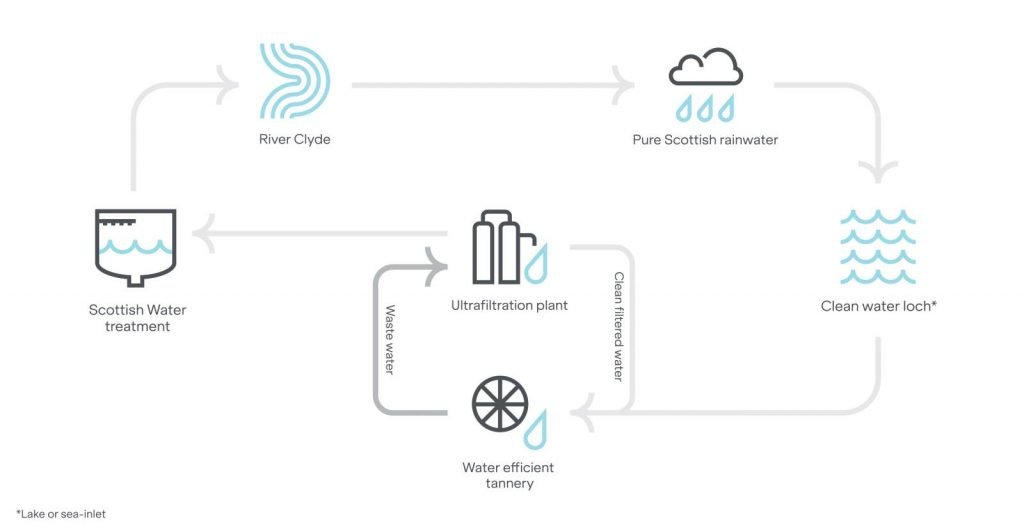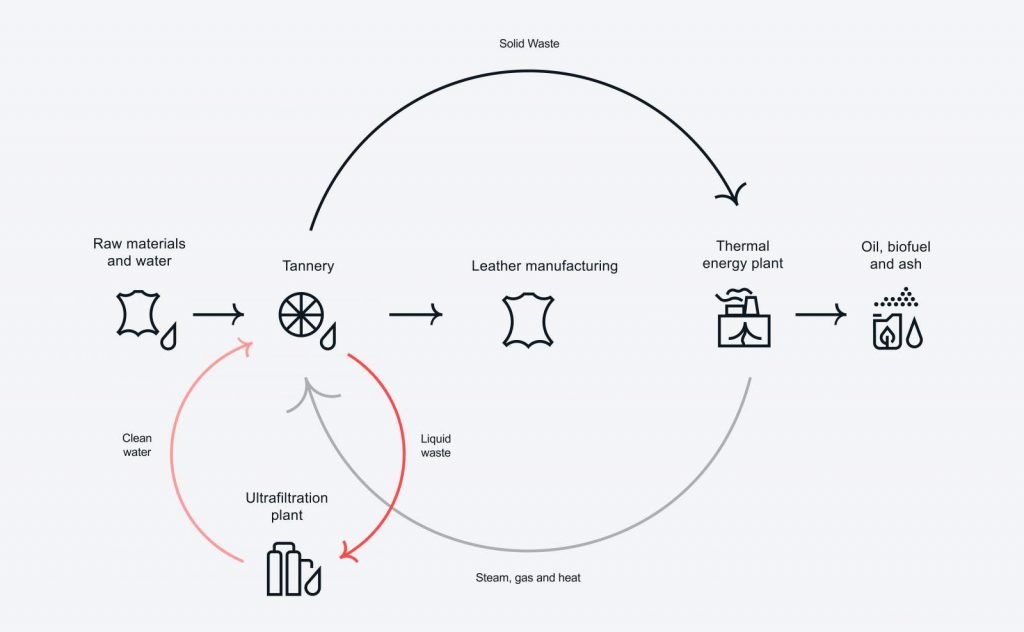In the first of our innovation series, we’re going to be getting under the skin on leather’s role in next-generation car interiors.
For years, leather has been the ring-bearer for comfort, durability, and luxury in vehicle interiors. On dashboards and steering wheels, seat covers, panelling and arm rests. It provides the finishing touch that thrills both driver and designer alike, and our journey to zero is leading the leather industry.
“Innovation is essential to move ever closer to our ultimate goal of zero impact leather manufacturing.”
But when it comes to carbon footprints, what should the future of car interiors look like? The big question is: can leather, the most natural of materials, lead the way, and can its’ innovations be a force for good?
The future’s electric
As the automotive industry speeds to an electric future of net zero goals and planet-friendly solutions, future-forward facing innovators could be forgiven for thinking leather is passé.
Traditional leather vs textile car interiors
As designers, we’re always challenging ourselves. How do you respond to the growing need for sustainable, low-impact natural products that don’t compromise on quality? When there are new and modern synthetics (even mushroom spores) fighting for its place, should we maintain our focus on something that’s been around for thousands of years?
A natural fit
On the one hand, car designers need to innovate, but is it the right decision to move away from leather? We think the two are a natural fit.
Modern problems can often have traditional solutions. There are many ways that leather that can be harnessed to address some of the problems we face as a society today.
Here are just a few of our favourite ones.
1. The hygiene factor
When the world asked for leather to cope with post-pandemic demands, we answered. As consumers, we’re being more careful than ever and our sister brand, Muirhead, developed an Active Hygiene Leather for the passenger aircraft sector incorporating ViralOff® technology from Polygiene® AB.
This sustainable leather has built-in antiviral properties. It took off for the aviation industry and now, we’re exploring further developments for other industries.
Virus free in 2 hours
Even without cleaning, our recent innovations mean leather will be virus free within two hours of viral contact. It’s proven to reduce tested viruses by over 99%, including:
- SARS-CoV-2
- H3N2
- H1N1
2. Talking sustainable tanning
Tanning is the crucial part of the leather-making process that prevents its natural breakdown and makes it one of the longest lasting materials around. Nature itself is pretty innovative – so often we find ourselves coming back to the incredible things it can offer us.
Historically, automotive leather used to be vegetable tanned (with methods dating back to 6000 BC), but was largely replaced with chrome tanning due to its speed, effectiveness and colour fastness. Also chrome tanning is more efficient in water use, and requires less retanning to achieve the final result than non-chrome options.
Big picture process
The innovation team at Bridge of Weir are developing more sophisticated biobased tannages, exploring a range of new techniques, including non-chrome and non-aldehyde tannages, cleaner and more environmentally friendly processing, lightweight leathers, advances in anti-soiling and dye ingress technology.
Long-lasting, without compromise
We’re working alongside our customers who have stringent specifications to test, investigate and understand if these new generations of biobased tannages perform across the board. From colours to vehicle types, it’s never one-size-fits-all.
Managing the earth’s most precious resource: water
Having our own crystal clear loch helps. But our water-efficient tannery uses 50% less water per hide than our competitors, and we filter and recycle every drop we use.
Our ultrafiltration plant recycles up to 40% of our wastewater back into leather production.

3. Powering progress – with waste
“Leather is one of the oldest manufactured products and the original upcycled material.”
For us, leather is an upcycled material from a waste product. All our rawhides are a by-product of the local meat and food industries, which would otherwise end up in landfill if we didn’t upcycle them into our beautiful, sustainable automotive leather.
And we’ve powered our own progress by taking our process waste as fuel in a patented circular manufacturing process. Our thermal energy plant reclaims energy as steam or as a biofuel co-product from our waste streams and uses some of this heat to directly power our tannery. This minimises waste to landfill and radically reduces our carbon footprint, which in turn, helps our customers reduce their carbon impact too.

4. A journey to net zero by 2025
Together, with our circular manufacturing innovations, we currently make the lowest carbon intensity leather in the world by:
- Being regional and sustainable
- Sourcing rawhides locally from grass-fed cattle that are a by-product of the meat industry, saving them from landfill
- 100% traceability
- Using hides from suppliers who share our values and meet the highest standards of animal husbandry and welfare.
- Recovering energy from our waste
- Reducing waste to landfill
- Using renewable energy
- Finding value in other industries for our co-products.
But we’re not stopping there. We’re on a journey to carbon neutral leather by 2025.
5. Customers drive our innovations
At Bridge of Weir, we’re constantly finding brand new approaches to reinvigorate one of the world’s most loved materials in sustainable ways.
We’ve set up innovation hubs that bring together our teams, external specialists and customers – ensuring we help the automotive industry keep up with increasing pressures on carbon output, and respond to our post-pandemic world.
We’d love you to be a part of it.
Get in touch with us to discuss your ideas, and our current innovations.
*Quotes: Dr Warren Bowden, Head of Sustainability & Innovation, Scottish Leather Group









